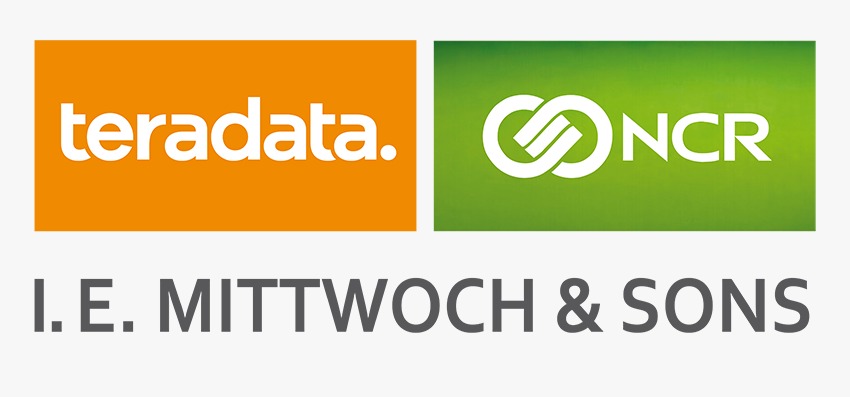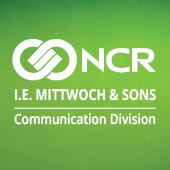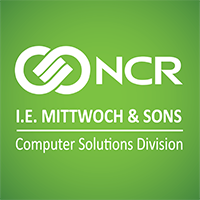Communication: terms & concepts
PBX
NETWORK
Private Branch Exchange
An enterprise telephony system that allocates an internal extension number for each employee, thus enabling employees to talk to one another (free of charge) and dial or receive calls from the public telephony network directly to the extension.
VoIP
Voice Over
Internet Protocol
Telephone calls over the Internet or private networks in the IP protocol. The protocol allows for internal and external calls.
IP
TELEPHONY
A switch operated in the office computer network in the IP protocol. Internal calls go through the internal network (or via the Internet for remote extensions), and calls outside the company network are made possible by connecting to the public telephony network or via the Internet.
IP PHONE
A telephone that includes a processor, that connects via the office’s internal computer network through an IP PBX. An extension is defined on the phone itself and it can be moved from one place to another on the network.
SOFT PHONE
Software installed on the computer or on the smartphone, connecting to the IP PBX and enabling the use of the computer as an extension of the PBX. This solution permits for mobility while maintaining the connection to the PBX.
IVR
Interactive Voice Response
A system that provides auto-response and incoming calls routing. IVR systems display a choice of voice menus and offer a voice interface for performing automated functions such as checking account balances, paying bills, real-time information and more.
UNIFIED COMMUNICATION
An integrated complex of communication services that allow the user to share and send a message through one channel, and receive a response during or at the end of a call, through another channel. For example, a user can open and hear an e-mail voice mail left on the phone and then answer it via a phone call, based on the availability of the message sender on the Presence system.
Unified communication complexes in advanced IP telephony systems, currently allow for an integration in a variety of channels, including voice, email, IM, text messages, video and social networks. As part of the unified communications complex, advanced presence capabilities are currently implemented in PBXs / telephony systems that allow receiving an indication of the availability of other employees in the organization to receive / share the call or message while interfacing with the personal / organizational meeting diary.
SIP
Session Initiation Protocol
Signaling Protocol used to control and manage calls over IP networks such as IP-based telephony and instant messaging. SIP, like HTTP SIP, is a client-server protocol based on request and reply messages that generate transactions. The SIP protocol was developed by the IETF and is known as RFC 3261. Nowadays, there are close to 20 additions and extensions described in the RFC and proposals for further extensions are submitted on a daily basis. Currently the SIP protocol is supported by more Internet telephony products and services than any other signaling protocol.
SIP TRUNK
A new connection configuration to the public telephony network based on the SIP protocol and enables the issuing and inserting calls to the network without the need for a adapter and PRI interface (ISDN interface) in the PBX. Customers with an IP PBX that supports the SIP protocol, can connect to the communication providers and transfer VoIP calls from end to end with no need to convert protocols and implement unified UC communication between different systems and communication channels.
CONTACT CENTER
Service center management system
A communication channel management system for customer inquiries to contact centers. Formerly, these systems were called “Call Centers” because all public inquiries were made over the telephone. Today, contact center systems serve a wide variety of channels, such as: instant messaging, SMS, Email, outbound, and social media.
Computer Telephony Integration
CTI
The CTI system enables an interface between the organization’s computerized information systems and the telephony system. This interface makes it possible to control the telephony system from external systems as well as transfer real-time data and historical data from the telephony system to external monitoring and control systems. A common use for CTI is to link the software system to CRM contact centers, integrating it with the center’s telephony systems.
ETHERNET SWITCH
A switch is a component of a computer communications network that connects various nodes in the network, whether they are end devices (such as computers) or basic network components (such as hubs). Switches can hold a small number of inputs, in case of home switches, and up to hundreds of inputs, in case of large communication networks. The switch transfers data between the equipment connected to its various inputs selectively according to MAC (Media access control) of the requested destination of each data packet sent through it.
ROUTER
The device responsible for routing packets between computer networks. The router determines in packet-switched networks (such as the Internet) the next network point to which the packet will be routed in order to reach its destination. A router connects at least two networks and defines the route by which each packet will be sent according to the analysis of the state of the network to which it is connected. The router is located in Gateways which is the means of connecting two or more networks. The router can be included as part of the network switch. The router is a critical component for storing data that passes between the networks and maintains the connection of the networks to the Internet.
MPLS
protocol
Protocol / standard for achieving higher network communication speeds while providing tools for easier network management. To achieve higher speeds the MPLS sets a pre-defined available network route for a set of packets. The path of the packet is identified by a label integrated in each packet, which saves the time required for the router to search for the address of the next node the packet needs to be transferred to. The purpose of the protocol is to define or specify the appropriate route for each action in order to minimize bottlenecks within the network. MPLS is an IETF initiative that integrates Layer 2 information on network connections, along with Layer 3, within a defined autonomous system, with the aim of simplifying and improving IP Packet transmission. MPLS is called Multiprotocol because it works with IP, ATM and frame relay communication protocols. The application of MPLS protocols also makes it possible to run different types of traffic on the same network, such as the ability to transmit data, voice and video at the same time.
SDN
Software Defined networking
A new approach in the field of computer communication which disconnects hardware of the system from the control system – Control Plane and the data transmission system – Data Plane.
The SDN concept evolved from work done at Berkley and Stanford universities. SDN allows the system administrator to control the system by dividing more basic functionality into virtual services.
SDN allows administrators to gain centralized control over network traffic via Controller without the need for physically controlling network switches.
WI-FI
Wireless networks
Wi-Fi is a technology that enables electronic devices to transmit information wirelessly. These networks are usually based on IEEE 802.11 standards, which allow the deployment of a communication network in which IP data packets are transmitted between the various consumers, over distances of a few tens or hundreds of meters. A Wi-Fi network operates in one of two modes: Infrastructure – a state in which the network is managed by one or more access points. The access point is usually integrated in the router and is responsible for communication in open space. All stations transmit to the access point and only to it, and it routes the packages as required. Ad-Hoc Network – an unmanaged network in which all consumers (computers, mobile devices that support the protocol, and so on) communicate with each other without an organized infrastructure. Each of the stations may broadcast at the same time, but since they all implement the protocol, mutual interference is usually avoided.
- For more information, please contact Shay Atia:
- 050-7258231
- shaya@ncr.co.il
Communication: terms & concepts
PBX
NETWORK
Private Branch Exchange
An enterprise telephony system that allocates an internal extension number for each employee, thus enabling employees to talk to one another (free of charge) and dial or receive calls from the public telephony network directly to the extension.
IP
TELEPHONY
A switch operated in the office computer network in the IP protocol. Internal calls go through the internal network (or via the Internet for remote extensions), and calls outside the company network are made possible by connecting to the public telephony network or via the Internet.
VoIP
Voice Over
Internet Protocol
Telephone calls over the Internet or private networks in the IP protocol. The protocol allows for internal and external calls.
IP PHONE
A telephone that includes a processor, that connects via the office’s internal computer network through an IP PBX. An extension is defined on the phone itself and it can be moved from one place to another on the network.
SOFT PHONE
Software installed on the computer or on the smartphone, connecting to the IP PBX and enabling the use of the computer as an extension of the PBX. This solution permits for mobility while maintaining the connection to the PBX.
IVR
Interactive Voice Response
A system that provides auto-response and incoming calls routing. IVR systems display a choice of voice menus and offer a voice interface for performing automated functions such as checking account balances, paying bills, real-time information and more.
UNIFIED COMMUNICATION
An integrated complex of communication services that allow the user to share and send a message through one channel, and receive a response during or at the end of a call, through another channel. For example, a user can open and hear an e-mail voice mail left on the phone and then answer it via a phone call, based on the availability of the message sender on the Presence system.
Unified communication complexes in advanced IP telephony systems, currently allow for an integration in a variety of channels, including voice, email, IM, text messages, video and social networks. As part of the unified communications complex, advanced presence capabilities are currently implemented in PBXs / telephony systems that allow receiving an indication of the availability of other employees in the organization to receive / share the call or message while interfacing with the personal / organizational meeting diary.
SIP
Session Initiation Protocol
Signaling Protocol used to control and manage calls over IP networks such as IP-based telephony and instant messaging. SIP, like HTTP SIP, is a client-server protocol based on request and reply messages that generate transactions. The SIP protocol was developed by the IETF and is known as RFC 3261. Nowadays, there are close to 20 additions and extensions described in the RFC and proposals for further extensions are submitted on a daily basis. Currently the SIP protocol is supported by more Internet telephony products and services than any other signaling protocol.
SIP TRUNK
A new connection configuration to the public telephony network based on the SIP protocol and enables the issuing and inserting calls to the network without the need for a adapter and PRI interface (ISDN interface) in the PBX. Customers with an IP PBX that supports the SIP protocol, can connect to the communication providers and transfer VoIP calls from end to end with no need to convert protocols and implement unified UC communication between different systems and communication channels.
CONTACT CENTER
Service center management system
A communication channel management system for customer inquiries to contact centers. Formerly, these systems were called “Call Centers” because all public inquiries were made over the telephone. Today, contact center systems serve a wide variety of channels, such as: instant messaging, SMS, Email, outbound, and social media.
Computer Telephony Integration
CTI
The CTI system enables an interface between the organization’s computerized information systems and the telephony system. This interface makes it possible to control the telephony system from external systems as well as transfer real-time data and historical data from the telephony system to external monitoring and control systems. A common use for CTI is to link the software system to CRM contact centers, integrating it with the center’s telephony systems.
ETHERNET SWITCH
A switch is a component of a computer communications network that connects various nodes in the network, whether they are end devices (such as computers) or basic network components (such as hubs). Switches can hold a small number of inputs, in case of home switches, and up to hundreds of inputs, in case of large communication networks. The switch transfers data between the equipment connected to its various inputs selectively according to MAC (Media access control) of the requested destination of each data packet sent through it.
ROUTER
The device responsible for routing packets between computer networks. The router determines in packet-switched networks (such as the Internet) the next network point to which the packet will be routed in order to reach its destination. A router connects at least two networks and defines the route by which each packet will be sent according to the analysis of the state of the network to which it is connected. The router is located in Gateways which is the means of connecting two or more networks. The router can be included as part of the network switch. The router is a critical component for storing data that passes between the networks and maintains the connection of the networks to the Internet.
MPLS
protocol
Protocol / standard for achieving higher network communication speeds while providing tools for easier network management. To achieve higher speeds the MPLS sets a pre-defined available network route for a set of packets. The path of the packet is identified by a label integrated in each packet, which saves the time required for the router to search for the address of the next node the packet needs to be transferred to. The purpose of the protocol is to define or specify the appropriate route for each action in order to minimize bottlenecks within the network. MPLS is an IETF initiative that integrates Layer 2 information on network connections, along with Layer 3, within a defined autonomous system, with the aim of simplifying and improving IP Packet transmission. MPLS is called Multiprotocol because it works with IP, ATM and frame relay communication protocols. The application of MPLS protocols also makes it possible to run different types of traffic on the same network, such as the ability to transmit data, voice and video at the same time.
WI-FI
Wireless networks
Wi-Fi is a technology that enables electronic devices to transmit information wirelessly. These networks are usually based on IEEE 802.11 standards, which allow the deployment of a communication network in which IP data packets are transmitted between the various consumers, over distances of a few tens or hundreds of meters. A Wi-Fi network operates in one of two modes: Infrastructure – a state in which the network is managed by one or more access points. The access point is usually integrated in the router and is responsible for communication in open space. All stations transmit to the access point and only to it, and it routes the packages as required. Ad-Hoc Network – an unmanaged network in which all consumers (computers, mobile devices that support the protocol, and so on) communicate with each other without an organized infrastructure. Each of the stations may broadcast at the same time, but since they all implement the protocol, mutual interference is usually avoided.
SDN
Software Defined networking
A new approach in the field of computer communication which disconnects hardware of the system from the control system – Control Plane and the data transmission system – Data Plane.
The SDN concept evolved from work done at Berkley and Stanford universities. SDN allows the system administrator to control the system by dividing more basic functionality into virtual services.
SDN allows administrators to gain centralized control over network traffic via Controller without the need for physically controlling network switches.
- For more information, please contact Shay Atia:
- 050-7258231
- shaya@ncr.co.il




